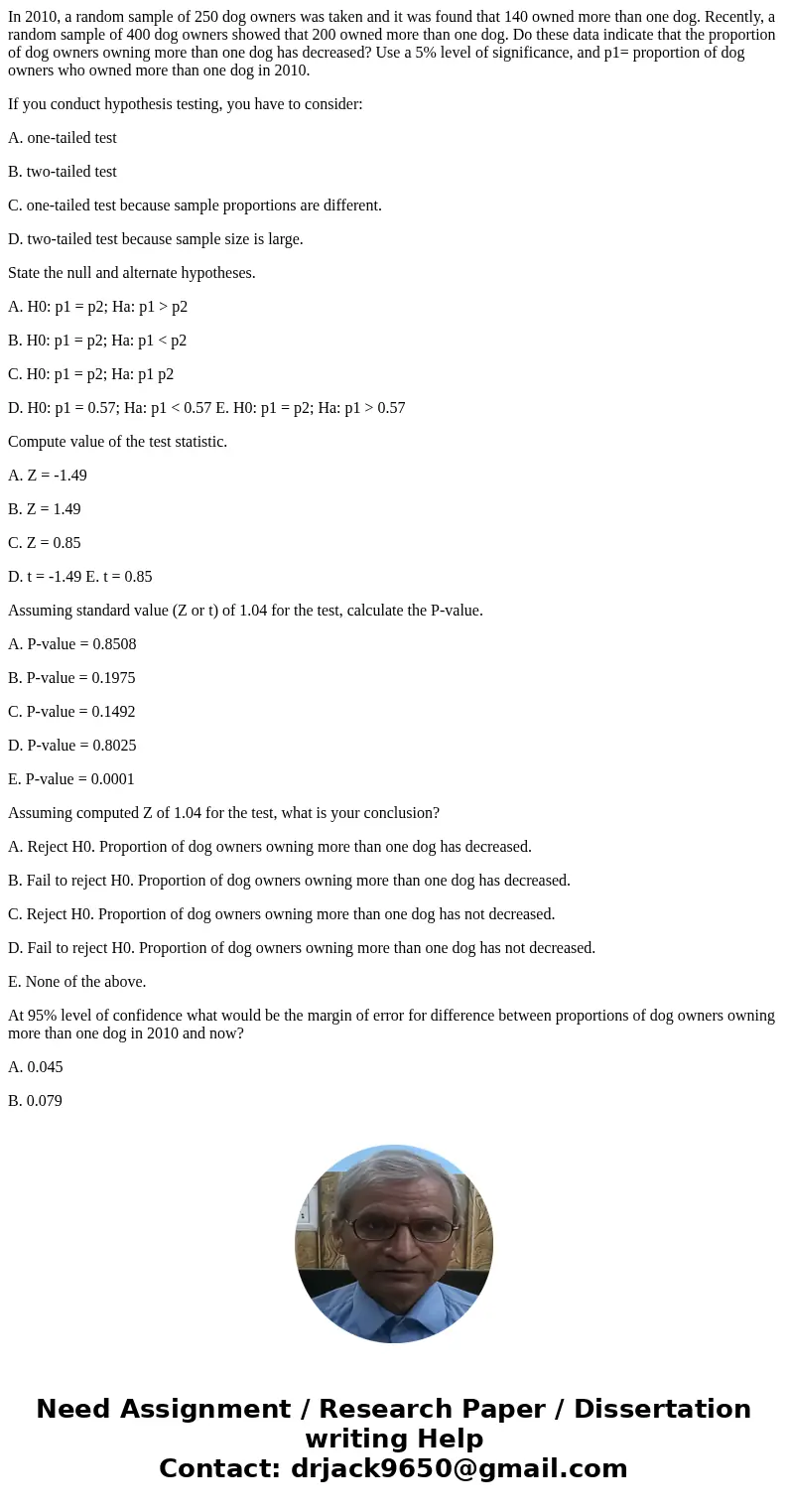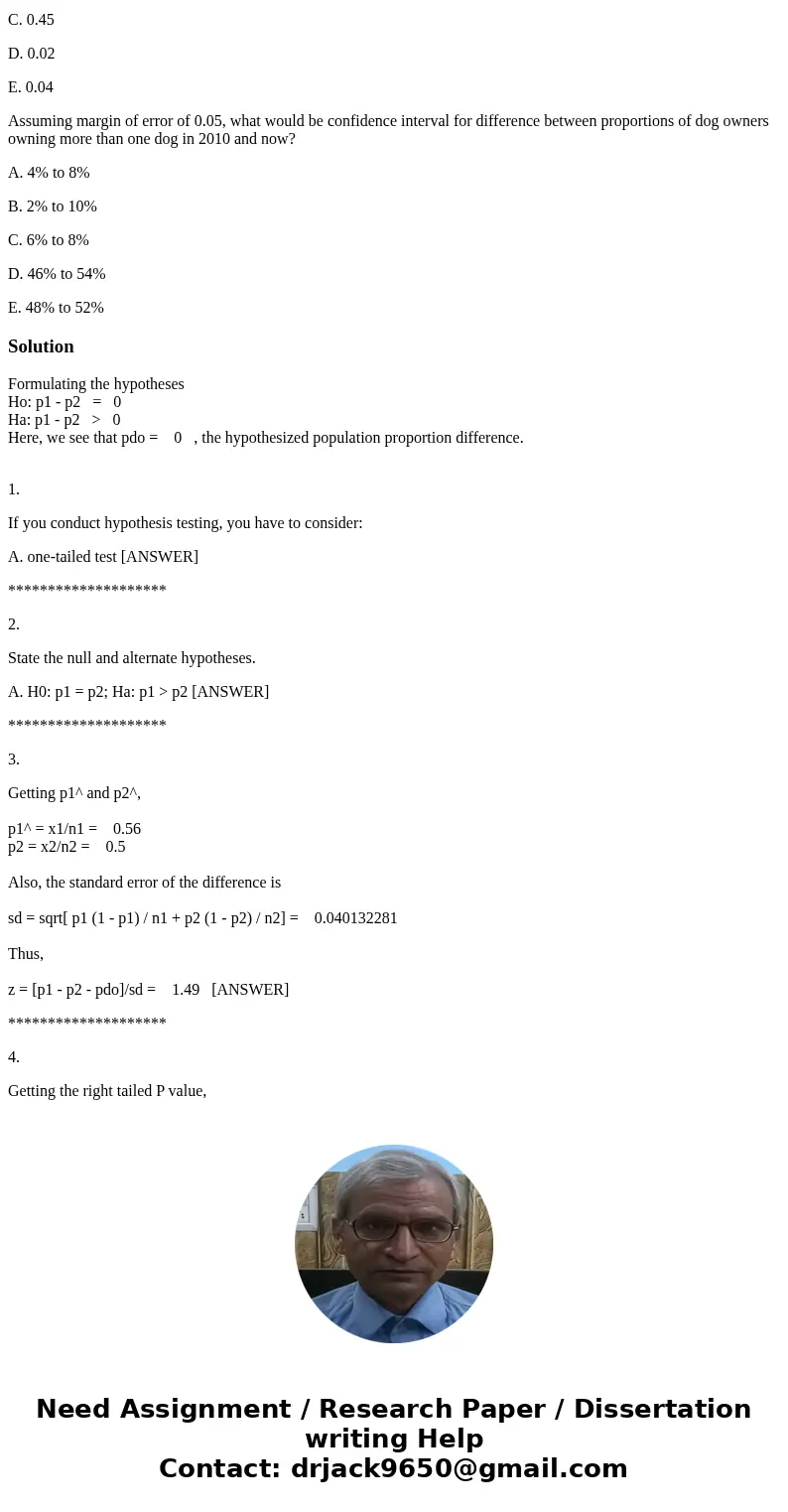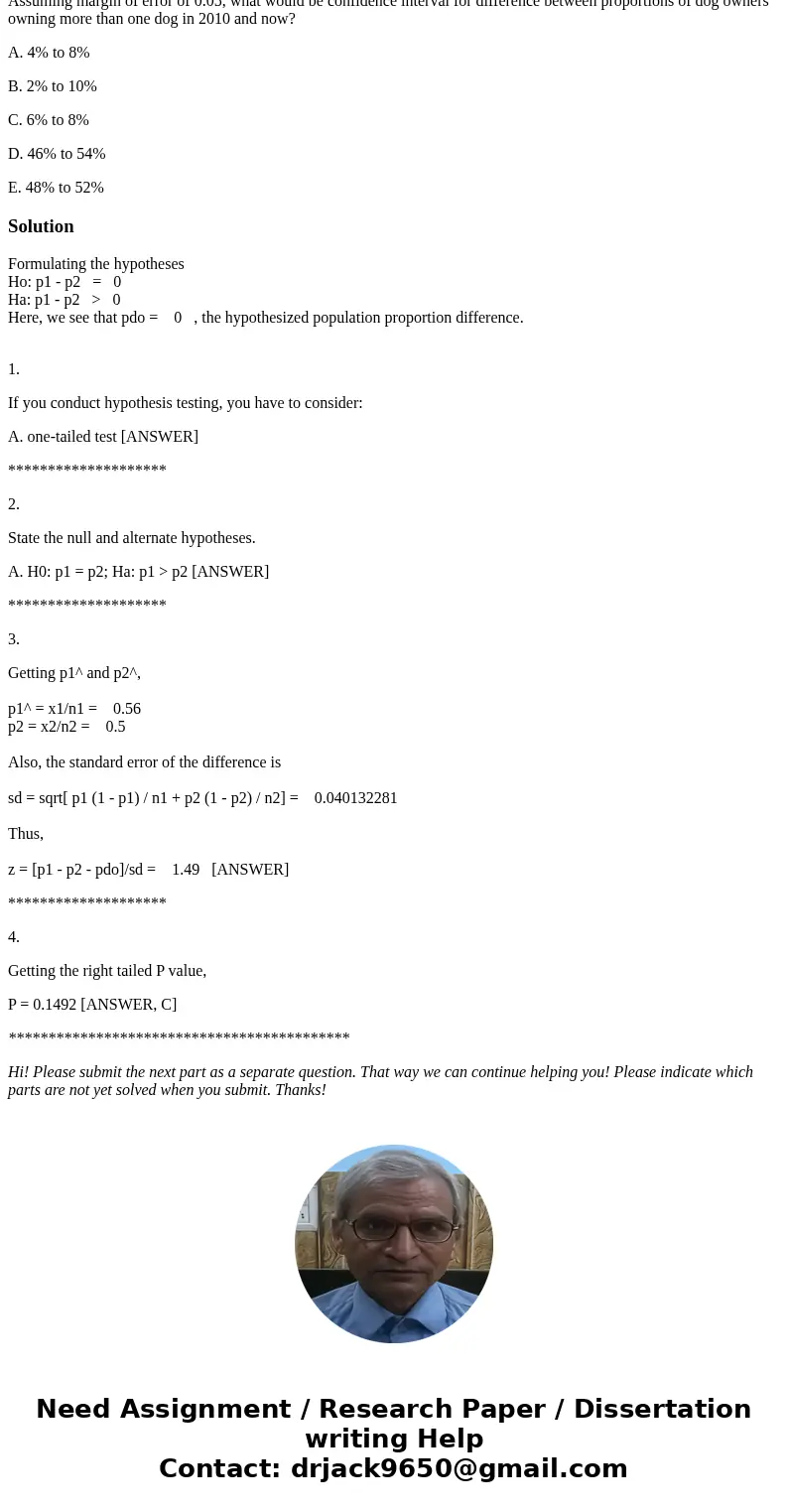In 2010 a random sample of 250 dog owners was taken and it w
In 2010, a random sample of 250 dog owners was taken and it was found that 140 owned more than one dog. Recently, a random sample of 400 dog owners showed that 200 owned more than one dog. Do these data indicate that the proportion of dog owners owning more than one dog has decreased? Use a 5% level of significance, and p1= proportion of dog owners who owned more than one dog in 2010.
If you conduct hypothesis testing, you have to consider:
A. one-tailed test
B. two-tailed test
C. one-tailed test because sample proportions are different.
D. two-tailed test because sample size is large.
State the null and alternate hypotheses.
A. H0: p1 = p2; Ha: p1 > p2
B. H0: p1 = p2; Ha: p1 < p2
C. H0: p1 = p2; Ha: p1 p2
D. H0: p1 = 0.57; Ha: p1 < 0.57 E. H0: p1 = p2; Ha: p1 > 0.57
Compute value of the test statistic.
A. Z = -1.49
B. Z = 1.49
C. Z = 0.85
D. t = -1.49 E. t = 0.85
Assuming standard value (Z or t) of 1.04 for the test, calculate the P-value.
A. P-value = 0.8508
B. P-value = 0.1975
C. P-value = 0.1492
D. P-value = 0.8025
E. P-value = 0.0001
Assuming computed Z of 1.04 for the test, what is your conclusion?
A. Reject H0. Proportion of dog owners owning more than one dog has decreased.
B. Fail to reject H0. Proportion of dog owners owning more than one dog has decreased.
C. Reject H0. Proportion of dog owners owning more than one dog has not decreased.
D. Fail to reject H0. Proportion of dog owners owning more than one dog has not decreased.
E. None of the above.
At 95% level of confidence what would be the margin of error for difference between proportions of dog owners owning more than one dog in 2010 and now?
A. 0.045
B. 0.079
C. 0.45
D. 0.02
E. 0.04
Assuming margin of error of 0.05, what would be confidence interval for difference between proportions of dog owners owning more than one dog in 2010 and now?
A. 4% to 8%
B. 2% to 10%
C. 6% to 8%
D. 46% to 54%
E. 48% to 52%
Solution
Formulating the hypotheses
Ho: p1 - p2 = 0
Ha: p1 - p2 > 0
Here, we see that pdo = 0 , the hypothesized population proportion difference.
1.
If you conduct hypothesis testing, you have to consider:
A. one-tailed test [ANSWER]
********************
2.
State the null and alternate hypotheses.
A. H0: p1 = p2; Ha: p1 > p2 [ANSWER]
********************
3.
Getting p1^ and p2^,
p1^ = x1/n1 = 0.56
p2 = x2/n2 = 0.5
Also, the standard error of the difference is
sd = sqrt[ p1 (1 - p1) / n1 + p2 (1 - p2) / n2] = 0.040132281
Thus,
z = [p1 - p2 - pdo]/sd = 1.49 [ANSWER]
********************
4.
Getting the right tailed P value,
P = 0.1492 [ANSWER, C]
*******************************************
Hi! Please submit the next part as a separate question. That way we can continue helping you! Please indicate which parts are not yet solved when you submit. Thanks!



 Homework Sourse
Homework Sourse